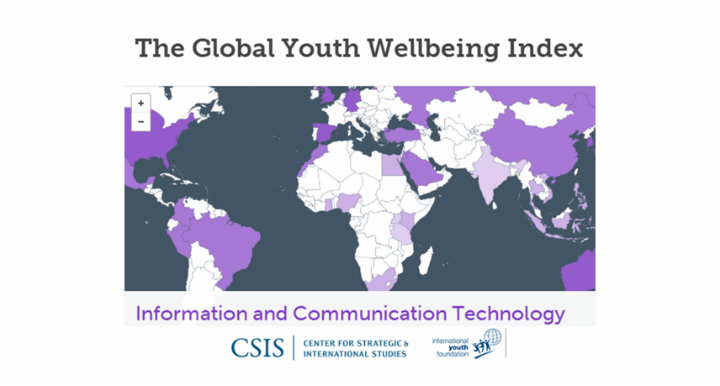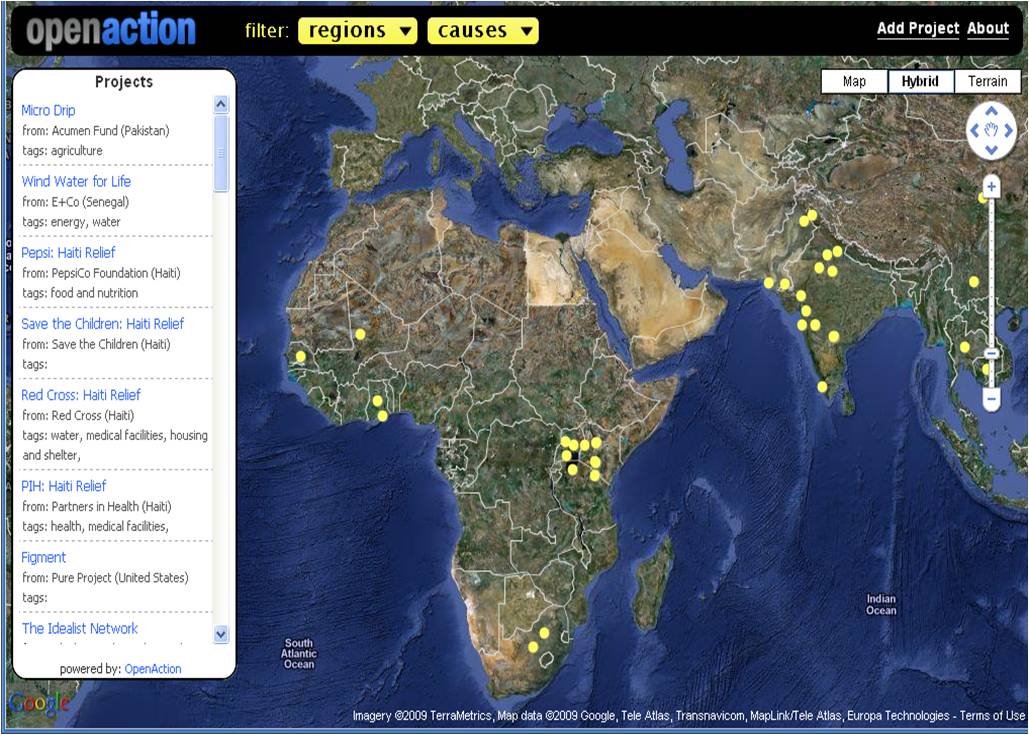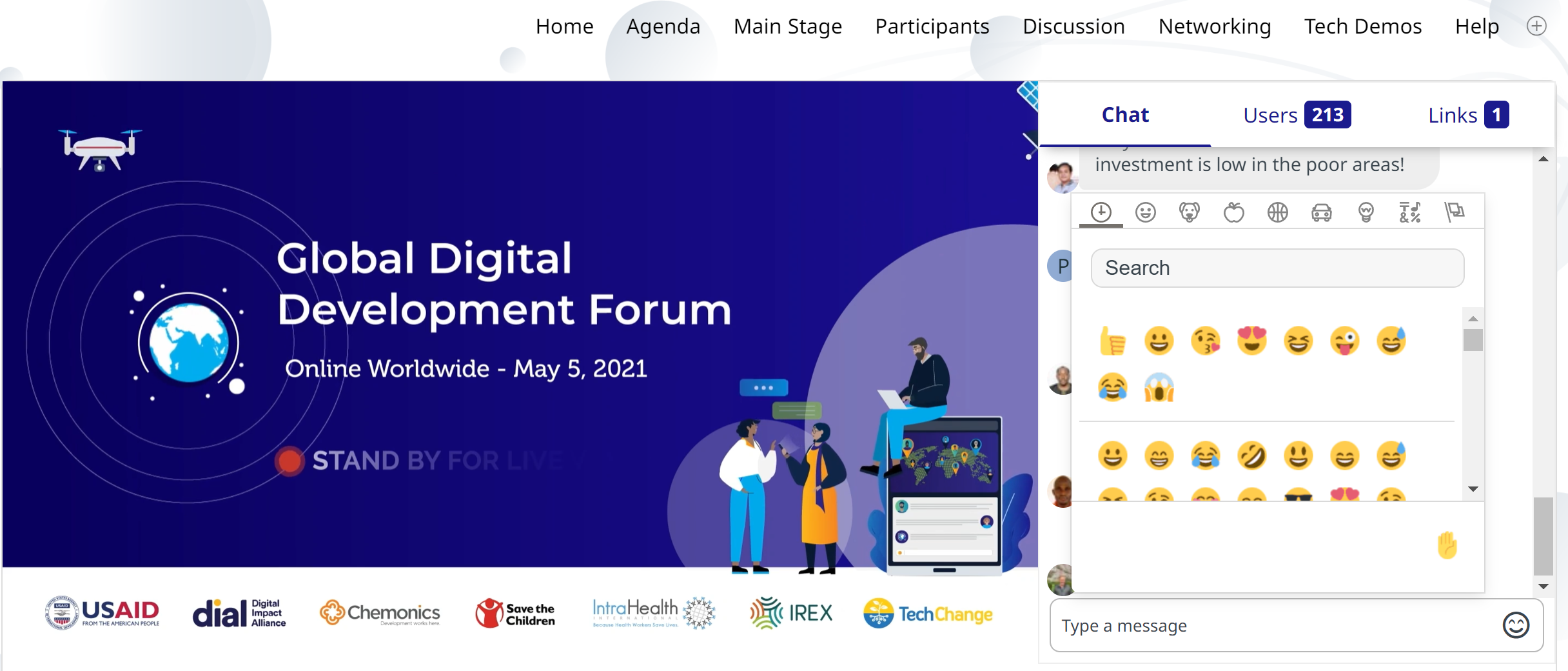Information and communications technology (ICT) is an integral component of the increasingly technology-driven global economic and social landscape. For many of us, ICT has become the principal way we communicate and get informed, shop or sell and increasingly how we learn, bank, advocate, get medical guidance or engage with our government. As the first generation of “digital natives,” ICTs – both old and new– have arguably become akin to a central nervous system among (many) youth. ICT has also become an essential component to improved outcomes across the domains of wellbeing, including civic participation, economic opportunity, education, health, and safety and security. This is particularly true for youth; at a local level, finances, transportation, information sharing, and innovation are increasingly linked with technology, and all represent important components to youths’ lives. As recent surveys have indicated, youth in emerging and developed economies alike are increasingly dependent on the internet; by the end of 2011, 45% of the 2.3 billion global internet users were younger than 25, and this demographic is projected to increase. Yet there remain large economic and regional disparities in global youths’ access to ICT. In 2012, just over 9 percent of Africans youth aged 15-24, and 79 percent of European youth, had used the internet for five years.
In the Global Youth Wellbeing Index that was recently released by the Center for Strategic and International Studies (CSIS) and the International Youth Foundation (IYF), we highlighted the importance of ICT in youth wellbeing. Of the forty indicators that comprise the Index, five make up the ICT domain and include access to electricity, households with radios, ICT for development score, digital natives, and youths’ dependence on the internet.
“ICT and youth have long been linked as new generation embrace new technology to improve their lives, find jobs, and engage their community.”
-Nick Martin, Co-founder and president, TechChange
A few key findings
Index findings indicate a strong correlation between ICT, countries’ income levels, and overall levels of youth wellbeing. Countries that perform best in ICT are generally those upper and upper-middle income countries that perform best in the overall ranking of youth wellbeing. South Korea, Sweden, the United States, United Kingdom, Germany, Japan, Australia, Spain, Saudi Arabia, Brazil are the top ten performers within the ICT domain, and nine of these countries, with the exception of Brazil, are top ten performers in the overall rankings.
There are significant disparities in ICT access and development between developed and developing countries, beginning with foundational access to electricity. Out of the six domains comprising the Index, there is the largest gap between the top and bottom performer scores in the ICT domain, with South Korea at .94, and Uganda at .18, indicating wide disparity in ICT development between the thirty Index countries. Developed countries have substantially higher levels of mobile phone and internet use, house more digital natives, and youth who indicate a higher dependence on the internet. There is a smaller, but still significant, gap in access to electricity and radio ownership between developed and developing countries.
Additionally, a few countries perform better in the ICT domain than in their overall Index rankings. At 25th place overall, Russia, for example, ranks 13th in the ICT domain, with high access to electricity, mobile phone and internet access, youth dependence on the internet, higher numbers of digital natives. Brazil, too, ranks significantly higher in the ICT domain at 10th place, compared with its 15th place ranking overall, and performs above average in each of the five indicators.
Countries in the Middle East-North Africa (MENA) region also perform well in this domain compared to its overall Index performance. Saudi Arabia performs best among the MENA countries, while Egypt, Jordan, and Morocco also perform significantly better in the ICT domain than in their overall ranking of youth wellbeing, indicative of the MENA region’s burgeoning technology sector. Mexico and Nigeria, two other countries with growing technology sectors, also perform well in this domain.
Conversely, some upper middle income countries perform lower in the ICT domain than in their overall Index ranking. Thailand, for example, ranks significantly lower in ICT, at 19th place, than it does overall, at 10th place. While Thais have above average access to electricity, and youth indicate a slight dependence on the internet, there are fewer digital natives and households with radios, and mobile phone and internet access is lower. South Africa, another upper middle income country, also faces significant challenges in the ICT domain, scoring below the average in every indicator except household radios.
Perhaps unsurprisingly, lower income countries perform the worst in this domain. The 10 lowest performing countries are located in the Southeastern Asia and Sub-Saharan Africa region. Many lower income countries still face challenges in basic access to electricity, which heavily influences their performance across the other domain indicators.
A couple key conclusions
First, countries with greater economic resources and private sector investment have more supportive ICT infrastructure that enables them to perform better on indicators related to access to electricity, mobile phone and internet access, radio ownership, digital natives, and youths’ dependence on the internet. Perhaps unsurprisingly, youth in more advanced economies generally express greater reliance on the internet today. Japanese youth however indicate that the internet is less central in their lives than other top performers; and young Jordanians express above average dependence on the internet, though other indicators of access remain weaker.
Second, as we’ve highlighted in our other Index domain discussions, data remains limited, or nonexistent altogether, for a number of important ICT performance-based measurements. While there have been important contributions recently to the data body on certain elements of ICT usage among youth, such as International Telecommunications Union’s most recent (2013) Measuring the Information Society Report which included the digital native dataset on internet use, more data on youth and gender-disaggregated access to and use of other media and technology (such as mobile phones) could highlight opportunities for investment and partnerships to increase youths’ educational outcomes, civic participation, and economic opportunity. This, in turn, could promote more inclusive growth in both developing and developed economies.
As youth have said themselves in the Bynd 2015 Declaration, “Health, civic engagement, online protection, environmental protection and economic success all depend on having unfettered access to knowledge which ICTs can extend to everyone.” While investments and efforts must be made to bridge digital divides and mitigate their negative consequences or use, ICTs can be a powerful tool to improve education, health, and governance outcomes, and make training relevant in larger development initiatives in the Post-2015 era. You can explore the data and download the reports at www.youthindex.org.
Dr. Nicole Goldin is director of the Youth, Prosperity and Security Initiative at the Center for Strategic and International Studies (CSIS) in partnership with the International Youth Foundation (IYF). Follow her on Twitter @nicolegoldin.





